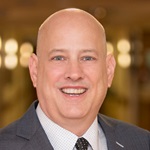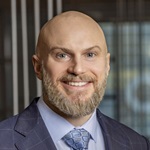Dr. Soto’s Story: Thriving After a Brain Bleed
Perhaps it’s part of being a doctor, or maybe even a mom, but Wendy Soto, MD, has conditioned herself to press through pain and put others first.
So when a severe headache hit her one Tuesday in early May, she treated it with over-the-counter medications, thinking it was one of her occasional migraines. But her headaches worsened, untouched by Tylenol and Motrin. Even her prescribed Imitrex didn’t make a difference.
The pain woke her at 2 a.m. Friday. “I finally fell back to sleep for a few hours before getting up to go to work,” the internal medicine/pediatric doctor recalls.
While seeing patients, Dr. Soto’s pain grew more severe, and the vision in her left eye became blurry. That’s when she decided to go to an emergency room close to her Hamilton, Ohio, office.
When a CT scan was inconclusive, Dr. Soto insisted on an MRI. That test revealed her left vertebral artery had an injury, called an arterial dissection, which resulted in a traumatic aneurysm (a weakened spot) in her basilar artery. A dissection occurs when one of the inner layers of the artery wall becomes torn, allowing blood to tunnel into the false channel that has been created.
This diagnosis called for the immediate attention of a neurointerventionalist, a specialist who deals with blood vessels in the brain and spinal cord. Fortunately for Dr. Soto, a team of doctors with that specialty was available at Miami Valley Hospital.
Near Home and in Good Hands
Dr. Soto was taken by CareFlight’s Mobile Intensive Care Unit to Miami Valley Hospital and placed in the ICU under the supervision of neurologists John Terry, MD, and Bryan Ludwig, MD. On Friday night, she was in surgery. The doctors repaired the torn blood vessel and reduced the blood supply to the traumatic aneurysm deep inside her brain – all without having to put a scalpel to her head.
The doctors guided a tiny wire and tube (catheter) through her arterial system into the brain arteries. Medical imaging enabled them to follow where the wire and catheter were going. After the doctors deployed three stents to repair the torn vessel, the flow of blood to the aneurysm was immediately reduced. Over the next 24 hours, blood was no longer flowing to the aneurysm, making it unlikely that a rupture would occur.
“A lot of what we do is similar to work done by interventional cardiologists,” says Dr. Ludwig. “We use some of the same procedures to work on the vessels in the brain. While some new devices have been created, most have been modified from tools used by interventional radiologists and interventional cardiologists.”
Being treated in Dayton meant one less stress for Dr. Soto, a Huber Heights resident, who already works hard to balance work and life as a mother of four. Two weeks after the procedure, Dr. Soto returned to work.
Recovery, Reflection and Referrals
Dr. Soto was dismissed from the hospital on Monday morning, having spent fewer than three days undergoing treatment for a life-threatening medical condition.
During her recovery, Dr. Soto was able to reflect on her experience and pinpoint how her problem began. While doing an extreme workout program the day before her headaches started, she remembers feeling an excruciating pain in her neck.
It was then, Dr. Ludwig believes, the tear in her blood vessel occurred, creating a new, but unnatural, route for blood to flow between the layers of the artery; this resulted in the creation of a traumatic aneurysm. The headaches and blurry vision were the symptoms that followed.
An artery dissection (i.e., tear) occurs in all ages and can be precipitated by something as simple as a sneeze. Dr. Ludwig says, “Some people are just predisposed to have weaker arteries.”
“My experience makes me a lot more aware of what can go wrong,” Dr. Soto says. “Now when patients come in complaining of headaches, I make sure they have no other worrisome warning signs.”
B — Balance: Does the person have a sudden loss of balance?
E — Eyes: Has the person lost vision in one or both eyes?
F — Face: Ask the person to smile. Does one side of the
face droop?
A — Arm: Ask the person to raise both arms. Does one arm drift downward?
S — Speech: Ask the person to say something. Is the speech slurred or garbled?
T — Time: If you notice any of these symptoms, call 911 immediately. Time is critical!
Premier Health’s stroke services are provided at all Premier Health hospitals. Jillene was first seen at Miami Valley Hospital South. After evaluation by a TeleStroke Network specialist, she was referred for further testing.
“The stroke team evaluated her and identified that her vision loss in the right eye was a warning sign for a potential problem with the artery in the neck,” Dr. Ludwig says. “Thankfully, she was okay at this stage and not having any further outward symptoms, which allowed us to transfer her to the main hospital.”
Within Premier Health, Miami Valley Hospital is a Comprehensive Stroke Center. This recognition is awarded by the Joint Commission, which uses specific guidelines and standards to evaluate stroke services and ensure quality.
Centers that participate in the same process include the Cleveland Clinic, the Mayo Clinic, Massachusetts General and Stanford University Medical Center. These hospitals grade themselves against one another to ensure the highest standards.
“We find that our standards are just as high as theirs, which we're very proud of. We like to make sure that folks in Dayton know that,” Dr. Ludwig says.
When Jillene arrived at Miami Valley Hospital, doctors examined her arteries and performed two surgeries. Physicians placed stents in both arteries using a minimally invasive procedure with a surgical robot. Thanks to the surgeries, Jillene’s vision improved and her energy level increased.
“I went to recovery and then home the next day,” Jillene said. “They just can’t get over how well the procedure went, and I can’t either.”
Jillene says she feels better than she has in years. She continues to travel, something that she had once feared doing after her eyesight diminished. She also continues to work. She says she has more energy, and family members talk about how she looks healthier than ever before.
“God hasn’t given me a reason to go,” Jillene said. “Until I find that reason, it’s important for me to stop worrying about dying and start living again. I’ve got a lot to live for and I’ve got some beautiful grandbabies to see.”


Contact Us
Our specialists are ready to help you get back to the things that matter most in your life. Find a provider near you or consult our list of related practices.
Our specialists are affiliated with:

